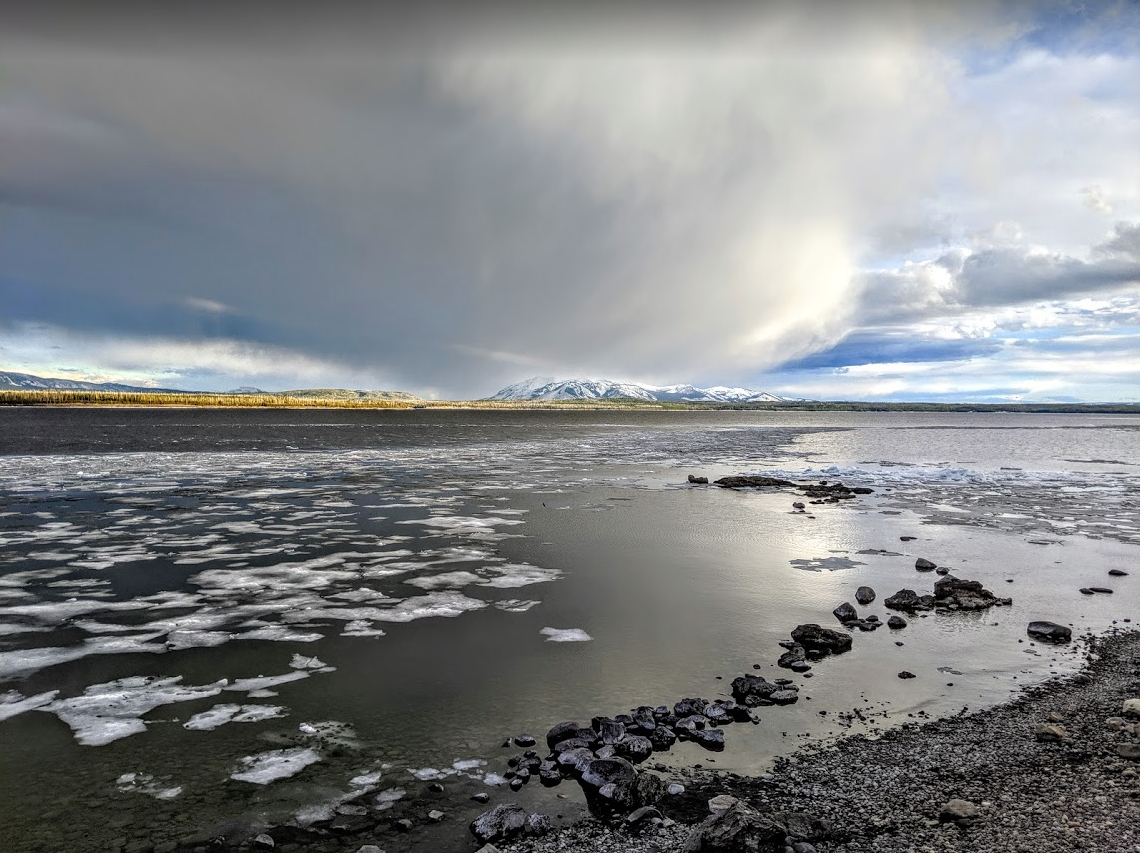National Park Service removed more than 280,000 invasive fish in 2019
Yellowstone National Park and its crews of contracted gillnetters removed 282,960 invasive lake trout from Yellowstone Lake this summer, a slight dip from previous years, and a likely indication that overall lake trout numbers are shrinking.
Nevertheless, there remains work to be done to further knock back the lake trout population in Yellowstone Lake to further enable the rebound of native Yellowstone cutthroat trout that have evolved and inhabited the lake for eons.
“There is a considerable amount of work yet to do to build on this progress,” said Yellowstone National Park Superintendent Cam Sholly. “This will continue to be one of our conservation priorities.”
Lake trout—native to the Great Lakes and the boreal lakes of Canada and Alaska—were first discovered in Yellowstone Lake in 1994, likely the result of an illegal introduction from nearby Lewis or Shoshone lakes, where the fish were intentionally stocked more than 100 years ago. Since the invasive fish’s discovery, the Park Service has removed than 3.4 million lakers.
The lake trout invasion of Yellowstone Lake caused the native Yellowstone cutthroat trout population to crash. By 2010, 90 percent of the spawning population of native cutthroats was gone. Lake trout are voracious predators—a mature lake trout can eat 40 native cutthroat trout over the course of a year.
This not only impacts cutthroat trout, but all the animals that depend on plentiful native fish runs in the park, like grizzly bears, otters, ospreys and the like. The loss of the lake’s cutthroat trout has rippled through the park’s connected ecosystem over the last two decades. Restoring cutthroat trout will restore some food-web equilibrium in the years to come.
However, thanks to netting efforts by the Park Service, and help from volunteer-based organizations like Trout Unlimited, Yellowstone Forever and the Greater Yellowstone Coalition, cutthroat numbers are on the rise, and more and more spawning fish are returning to the tributaries of Yellowstone Lake in the spring to spawn.
This year’s lake trout haul is 29 percent lower than in 2017, when gillnetters removed 396,950 fish from Yellowstone Lake. As noted, this is likely because there are fewer lake trout to actually remove. According to the Park Service and Michigan State University, there about 73 percent fewer mature lake trout (ages 6 and older) in the lake than there were at the population’s peak in 2011. This is key data, because the mature lake trout are prolific spawners.
More good news: the data from the NPS and MSU also indicates that lake trout numbers in Yellowstone Lake have been on a generally downward trend since 2012. Clearly, the effort to remove these exotic fish is working.
While the scientific models bolster the work being done each summer to net and kill lake trout from Yellowstone Lake, a panel of scientists earlier this year suggested it will take at least five more years of netting to achieve a lake trout population of 100,000 or less. With that in mind, the Park Service is using data collected from telemetry equipment to target known lake trout spawning beds. For two years, the NPS has used plant-based to smother spawning sites and rob the water of oxygen. This method killed lake trout eggs within two days.
Over the last 20 years, the Park Service has invested $20 million in lake trout removal—much of this money comes from volunteer donations through Yellowstone Forever, but the telemetry equipment used to monitor lake trout movement through the lake to enable gillnetters to target fish, and for the NPS to target spawning redds, was funded through donations from TU volunteers all over America.
“The park will never completely eradicate lake trout, but the return on investment is the ecological restoration of Yellowstone cutthroat trout, sustainable angling, and a chance to glimpse a river otter, osprey, or bear catching a cutthroat,” said Dr. Todd Koel, leader of the Native Fish Conservation Program.
In addition to restoring Yellowstone cutthroat trout in Yellowstone Lake, the Park Service is actively working to restore native west slope cutthroat trout and Arctic grayling in the headwater streams of the Missouri River drainage within the park.



